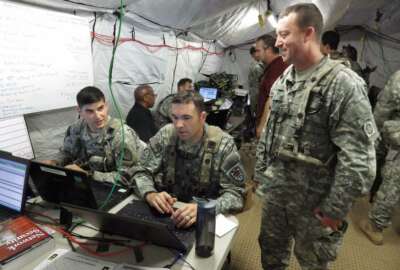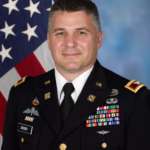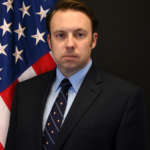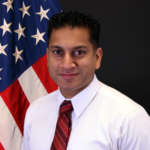
Army begins process to upgrade hardware, software for 400 operational units
The Army is just a few weeks into what’s likely to be one of the largest tactical IT upgrades in its recent history.
The Army is just a few weeks into what’s likely to be one of the largest tactical IT upgrades in its recent history: updating the hardware and software used and carried by 400 deployable units across the active-duty Army, the National Guard and the Army Reserve.
By the time the project is finished in 2019, officials say they will have consolidated 12 different versions of hardware and software that are now fielded across the Army into a single, common baseline, making the service’s mission command systems simpler to use, easier to train on and significantly more cyber secure.
The version reduction project is an effort to correct a proliferation of various software and IT equipment that was gradually deployed to combat units in a non-standard way, mostly in response to urgent needs throughout the course of the wars in Iraq and Afghanistan.
“Given the amount of time it takes this organization to fully field [mission command software] to the entire Army, we just couldn’t keep up with the amount of versions that were being demanded by the operational force,” Col. Troy Crosby, the project manager for mission command, said in an extensive interview for Federal News Radio’s On DoD.

So, in 2016, Army Forces Command asked Crosby’s organization — part of the Army Program Executive Office for Command, Control and Communications-Tactical (PEO-C3T) — to find ways to bring Army units to a common level of modernization and simplify future network modernization projects.
To complete the upgrades, the Army is using its standard “unit set fielding” process, a procedure in which equipment installations and training are all handled at one location. That process would normally take around five years to accomplish, considering the number of units involved, but the project management office plans to finish the job in just two years.
“The accelerated timeline is probably our biggest challenge,” said David Meickle, a product support manager with PM Mission Command. “We’re going to need to align the units’ missions — their deployment schedules, exercises, unit rotations, PCS moves — and our training. We’ve had a lot of help from Department of the Army headquarters in laying out a feasible schedule, especially when it comes to the National Guard and Reserves actually being available for training, but it’s still a significant challenge.”
In order to be able to touch as many units as possible at one location, PM Mission Command is sending its installation and training teams to one region at a time. The process began last month at Fort Campbell, Kentucky, where installations began with the headquarters of the 101st Airborne Division two Army Reserve units.

“The concept is we would stay kind of in that region and bring soldiers from all three components into a central location, train them at the mission training facility, and then execute the equipment handoff at their unit location,” Crosby said. “Then we’d move onto another location, for example, a Fort Hood, and keep doing this regional approach until we hit the entire Army.”
Officials also view the project as central to the notion of a common operating environment (COE), a concept the Army has been working to implement for the past several years.
In the case of mission command hardware and software, the convergence around a single baseline will help lay the foundation for a subset of COE called the command post computing environment (CPCE), a single set of standards and architectures that developers within the Army’s various programs of record are expected to follow.
Crosby said the hardware for the common baseline that’s being installed now was deliberately selected to support the requirements laid out by that computing environment.
“That will save us both some time and obviously resources in fiscal year ’19 as we begin to field CPCE,” Crosby said. “That hardware should already be out in the force and should let us more rapidly field that new mission command capability out to the force.”

In addition to updating units with new hardware and software versions, officials say they’ll be removing outdated hardware that’s no longer needed or makes tactical IT systems more complex than they need to be.
Niraj Kadakia, the deputy product manager for PM Mission Command’s Strategic Mission Command, said overall, the simplified infrastructure the Army is installing should reduce the average training time for deployed systems administrators from 80 hours to 18 hours.
“We’ve tried to simplify configurations, which helps both with reducing human error and reducing time on the training side,” he said. “For example, we’re providing a unified voice over IP capability for operators in the command post. That’s going to really help enable the linking of all the different fragmented voice solutions we currently have across the Army and standardize it with this product.”
Copyright © 2025 Federal News Network. All rights reserved. This website is not intended for users located within the European Economic Area.
Jared Serbu is deputy editor of Federal News Network and reports on the Defense Department’s contracting, legislative, workforce and IT issues.
Follow @jserbuWFED
Related Stories

DoD oversight office says Army tactical IT systems still too complicated to use




